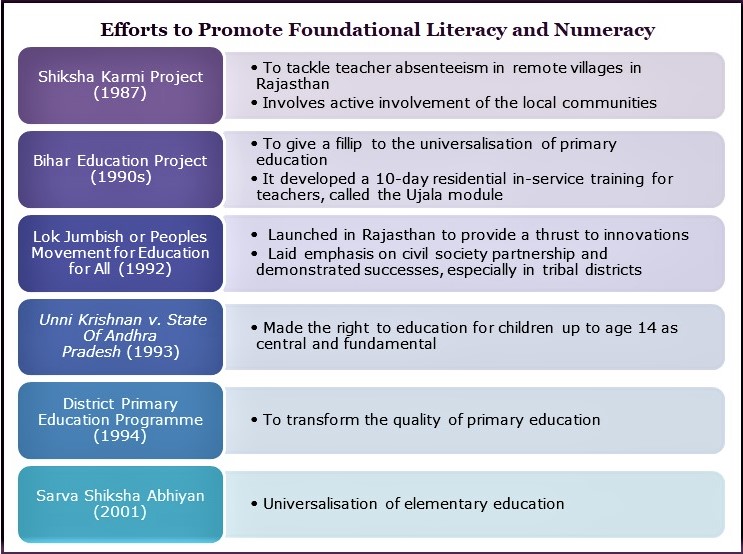7667766266
enquiry@shankarias.in
With India’s 132nd rank out of 191 countries in the Human Development Index 2021, there is a need to focus on the nation’s education, especially the foundational literacy and numeracy in all primary schools.

Quick facts
The Education for All Programme
References